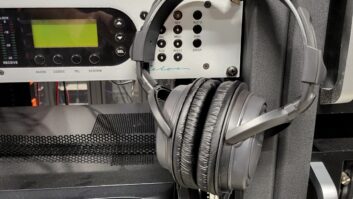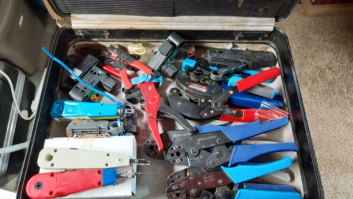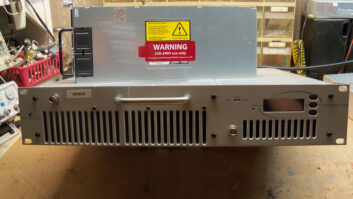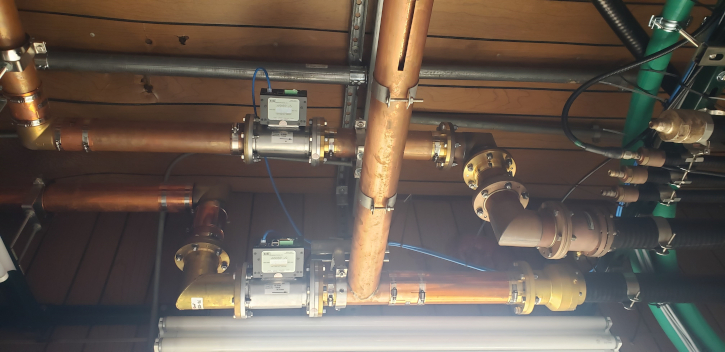
In addition to pumpkin pie, Halloween and Thanksgiving, this is the time of year to focus on budgets. Even if your station is one of the few that doesn’t use a budget process, it makes good sense to prepare a list of physical upgrades that may be needed in 2022.
As you review the equipment that may need to be upgraded, also consider acquisitions that can reduce your risk. A surge protector or UPS, for example, can save not only money but headaches, and you can’t beat the cost/benefit ratio.
[Read: Workbench: Time to Plan for Old Man Winter]
Another piece of protection equipment you may want to consider is a shorted quarter-wave stub. One can be placed on the output of an FM exciter, ahead of a tube transmitter, so that any tube arcing is shorted to ground and will not be fed into the exciter.
Our Radio World colleague Mark Persons has an interesting article on his website www.mwpersons.com describing its use. Select “Tech Tips” and look for “Stub Protector for FM Exciters and Transmitters” under the FM Tips column.
This concept can be used in higher-power applications, though you may not want to cut rigid line yourself.
Enter Fred Francis, an RF consultant, who manufactures tunable shorted stubs in both 1-5/8-inch and 3-1/8-inch rigid line under the company name Xenirad.
The quarter-wave shorted stub connects between your transmitter and your antenna system to short the center conductor to ground. This provides lightning protection for your transmitter. Should lightning strike your tower, the high-voltage pulse travels down your transmission line and meets the stub, where it is shorted to ground.
The stub is virtually invisible to your transmitter and offers 0 dB of insertion loss and an input VSWR better than 1.01. Return loss values are typically greater than –50 dB. Both fixed and frequency-agile models are available.
A real benefit is that the stub is maintenance-free, even after a discharge. There are no parts to replace.
The shorted stub acts as a broadband filter, and in sites where FM is collocated with AM, the latter signal is reduced by more than 30 dB.
An installed tunable stub is shown in the first image. It can be identified by the long slot, which provides fine-tuning across the FM band.
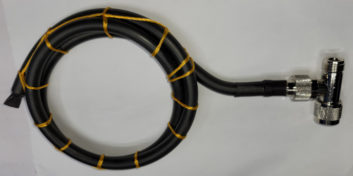
In addition to providing a DC short and broadband filtering, the stub recently was used at Black Diamond Broadcasting in Michigan by Del Reynolds, director of engineering, and his assistant Brian Brachel.
Brian was referred to Xenirad by Nautel’s Jeff Welton after Brian discovered a spur on their Continental 816R-4 transmitter. The spur was located on the GPS channel at 1.575 GHz. Installation of the shorted stub knocked out the spur. This particular stub was customized using two tunable stubs, one quarter-wave shorted and one quarter-wave open to remove the specific harmonic.
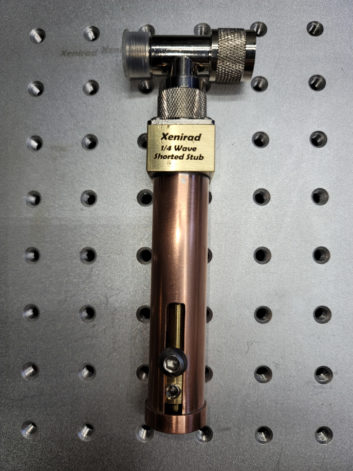
Shorted stubs also can be used on STL RF links and RPUs. The Curly-Q stub in the second image lists for $250 and is available from Broadcasters General Store. A rigid version for your STL is shown in the third photo. All protect the equipment to which they are connected.
An Update He Didn’t Want
I wonder how many other readers have experienced this: Dan Slentz writes that Windows 10 shoved another unrequested update down the “throat” of WDNP(LP)’s on-air computer the other night. Unfortunately, he says, the Win10 non-pro version doesn’t give you good options to block updates.
Previously a Win10 update had forced the audio card and computer audio to 48 kHz instead of the standard 44.1 kHz. This is a major problem for some software that wasn’t designed or have settings to change to 48 kHz.
After fighting with his Simian automation and ASI soundcard for weeks, Dan did find where and how to force the system back to 44.1 kHz.
[Check Out More of Workbench Here]
But the most recent Microsoft update did something new. When it forced the update, it apparently decided that it didn’t like the licensing dongle or the approval of the software, so it “unlicensed” the station automation — which went into demo mode, timing out every hour. This update took the station off the air for two hours!
The experience takes Dan back to why and how Microsoft can (or should) be allowed to do this. What if we’re talking health care equipment instead of radio or TV, he asks. They should not have the right to force any updates without our choice to accept them.
Dan wonders if they realize they had interfered with a federally licensed broadcast facility by knocking it off the air.
John Bisset, CPBE, is in his 31st year of the Workbench column. He handles western U.S. radio sales for the Telos Alliance and is a past recipient of the SBE’s Educator of the Year Award.
Send your tips to [email protected].










